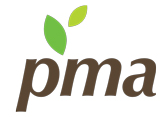Title Page
-
Site
-
Conducted on
-
Prepared by
-
Location
Where to start?
-
Ensure that all staff have training on general hygiene specific to your product and production system.
-
Ensuring effective hand washing is in place for all employees
-
Place a strong emphasis on the need for staff to declare if they are unwell and if so not attend their place of work
-
Ensure that you stay up to date with and follow the advice from your relevant health authority
Temperature Checks
-
If practice temperature check all staff entering and exiting any of the business’ sites at the start and the end of the day using an appropriate laser thermometer
-
It is likely to require having temperature checking equipment at the office, each packing shed, each workshop and in the field
-
Record those tested and require that all those tested wear a badge or sticker of some kind
-
identifying them as having been tested that day
-
Should someone record an elevated temperature refer to relevant health department advice and regulations
Packing Sheds
-
Many of those working in horticultural packing facilities are working in close proximity to coworkers
-
Packing shed layout, line design and space constraints all make it difficult to ensure all workers are more than 1.5 metres apart
-
Break the business into discrete zones for particular activities
-
Limit the number of people working across more than a single zone to limit cross contamination
-
Where practical reconfigure packing shed layout, line design and/or staffing levels in order to enable workers to be at least 1.5 metres apart
-
Risk assess and adjust production facility and equipment cleaning regime
-
Restricting people to defined lunchrooms and amenities where possible
-
This should help with identifying who has been in contact with who if/when a case was to occur
-
Stagger break times such that the numbers using meal facilities and ablution blocks at any one time are kept as small as possible
-
Remove excess chairs and tables from lunchrooms and space apart to encourage staff to stay 1.5 metres apart.
Field Harvest Crews
-
Many of those working in harvest roles in horticulture work in close proximity to their coworkers
-
Crop production systems and harvest aid design constraints can make it difficult to ensure all workers are more than 1.5 metres apart
-
Isolate different harvest crews from one another from the time they enter the site in the morning until they leave in the evening
-
Install hand washing and sanitising stations on each and every harvest aid if they are not already in place
-
Organise separate portable toilets for the respective harvest crews
-
Dial up cleaning regime for field based portable toilets
-
Dial up the cleaning and sanitation regime for harvest aids, knives and any other tools used by pickers.
-
Consider providing pickers with their own tools where possible i.e. own knives.
-
Consider reducing the size of harvest crews in order to enable more space between pickers
-
Consider altering harvest schedules in order to only have a single harvest crew in a given block at any one time
-
Stagger break times such that the numbers using meal facilities and ablution blocks at any one time are kept as small as possible
Workforce Accommodation
-
Horticultural enterprises and/or their labour providers are often involved in the provision of accommodation for seasonal staff
-
The risk of the virus being spread amongst workers in accommodation facilities is as great. if not greater than in the workplace
-
In order to minimise the likelihood of the virus being spread in accommodation facilities
-
•Decentralise the accommodation of your seasonal workforce as much as possible. The smaller the groups living together the better
-
•Accommodate workplace crews together, minimising cross contamination between the different crews working on your site
-
•Limit those accessing staff accommodation to those living there, including those that are working for the company, but living in other accommodation.
-
•No parties. No events.
-
•Minimise the use of shared cooking, laundry and ablution facilities as much as possible
-
•If various groups do need to use shared Facilities create a roster for when the facilities must be used by the various groups to minimise the numbers of people using these facilities at any one time i.e. follow social distancing protocols
-
•Risk assess and adjust accommodation, cooking, laundry and ablution facility cleaning protocols
-
•Ensure staff living in accommodation facilitated by the business or a labour provide observe government sanctioned personal hygiene protocols
-
•Identify alternative accommodation facilities to be used by those experiencing symptoms to self-isolate
-
•Ensure workers practice social distancing in the community outside work hours
Transport
-
Ideally discourage car pooling. If car pooling is necessary limit it to those already sharing accommodation and/or those
-
working in the same crews on packing lines or in harvest crews.
Acknowledgments
-
This document was produced by PMA A-NZ based on the contributions from Simon Drum (PSVC Advisory) and Tundra Howe (Harvest Moon).
Disclaimer
-
This document has been developed to provide general guidance to assist fresh produce companies to plan for and mitigate the risks posed by COVID-19 to their employees, their business, and the supply of fruit, vegetable and floral products to the community. While care has been taken preparing this Guide it does not constitute legal advice. In particular, the protocols that are suggested to be followed in the event of a member of your workforce being confirmed positive for COVID-19 are PMA A-NZ recommendations only. They do not constitute official advice. You must heed any advice and directions given by public health officials. Be aware that the situation in changing rapidly, and that these guidelines may need to be revised in the light of developments. Updates will be made available at pma-anz.com
Sign Off
-
Prepared by
















